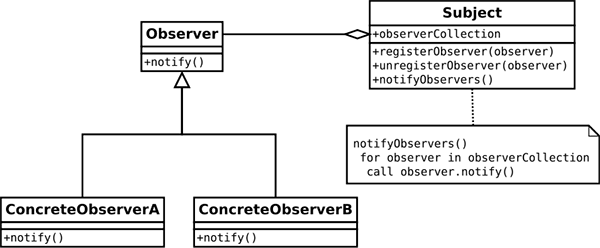| Lesson 7 | Traffic Flow System Course Project |
| Objective | Finish your traffic flow system. |
Traffic Flow System Course Project
Has the sturctu
You are almost done with the course project. At this point, all the fundamental pieces are in place.
All that remains is to attach a simple user interface for driving the simulation and watching it run.
This simple user interface is not an elegant one, but it will work well enough to test the system. It would not be hard to pull this interface out and replace it with a better graphical interface.
Analyzing the Application of the Observer Interface in Traffic Flow Systems
- Introduction:
The Observer design pattern is one of the foundational paradigms in object-oriented design, particularly relevant for scenarios requiring an object (known as the subject) to maintain a list of dependents (observers) and notify them of any state changes. In essence, it promotes a decoupled architecture where the observers can react to changes without the subject having direct knowledge of its observers. The question arises: Can this pattern be effectively utilized to model a traffic flow system simulating a distributed event-handling system? Let's delve into an analytical exploration. - Traffic Flow System: The Basics
At its core, a traffic flow system manages the movement of vehicles across intersections, roads, highways, and other transit points. Critical components include traffic lights, sensors, traffic management centers, and of course, the vehicles themselves. The primary goal is to ensure a smooth flow of traffic while minimizing congestion and ensuring safety. - Modeling Traffic Flow with the Observer Interface: A Conceptual Overview
- Subject(s): Traffic sensors, smart traffic lights, or central traffic management systems can be modeled as subjects. For instance, a sensor could detect the buildup of traffic at an intersection and notify relevant entities to take action.
- Observers: Traffic lights, warning systems, nearby alternative routes, or even vehicular onboard systems can be considered observers. They'd react to the notifications from the subjects, thereby adjusting their behavior or state accordingly.
- Advantages of Using the Observer Pattern in this Context:
- Decoupling: The traffic management entities (subjects) would operate independently of the systems reacting to their notifications (observers), promoting modular design and easier maintenance.
- Real-time Responsiveness: By ensuring immediate propagation of significant events to relevant components, the system can dynamically respond to varying traffic conditions.
- Scalability: New observers, like a newly added traffic management system or light, can be integrated seamlessly without altering existing subject implementations.
- Potential Challenges:
- Overhead: In a large traffic network, the number of notifications could be substantial, potentially leading to performance issues.
- Consistency: Ensuring that all observers receive and process notifications in a timely and consistent manner, especially in critical situations, might pose challenges.
- Complexity: The decoupling, while beneficial, might increase the complexity of the system, especially when dealing with inter-dependent events or when observers need to communicate amongst themselves.
- Conclusion:
In principle, the Observer interface offers a promising foundation for modeling a traffic flow system as a distributed event-handling system. Its intrinsic qualities of decoupling and real-time responsiveness align well with the requirements of modern traffic management. However, careful consideration must be given to potential challenges, especially concerning performance overhead and system complexity. With judicious implementation and optimization, the Observer pattern can indeed serve as a robust architectural choice for such a domain.
Observer Pattern reviewed
The observer pattern is a software design pattern in which an object, called the subject, maintains a list of its dependents, called observers,
and notifies them automatically of any state changes, usually by calling one of their methods. It is mainly used to implement
distributed event handling systems. Observer is also a key part in the familiar MVC architectural pattern. The observer pattern was first implemented in Smalltalk's MVC based user interface framework.

TrafficFlow System - Exercise
Now it is time to finish the system you have been developing.
TrafficFlow System - Exercise
TrafficFlow System - Exercise